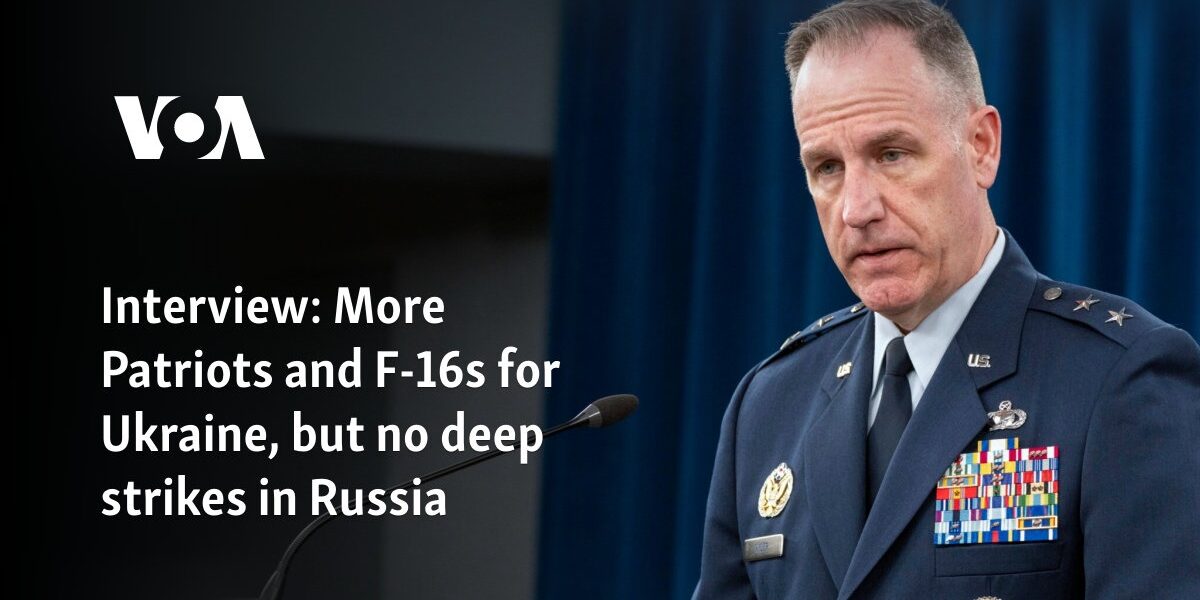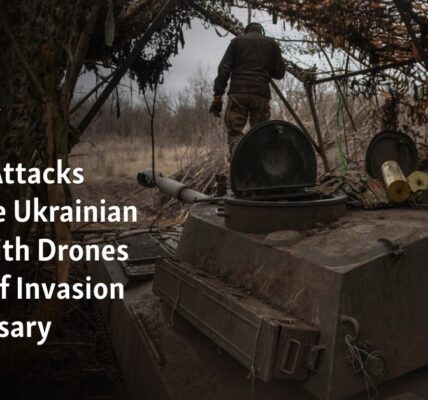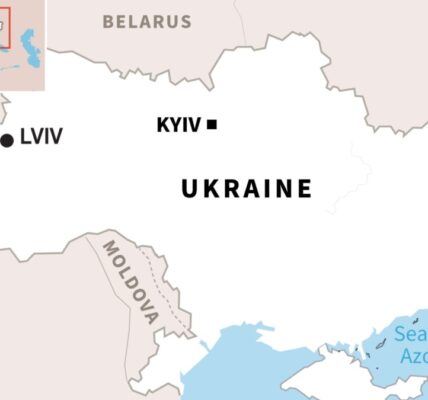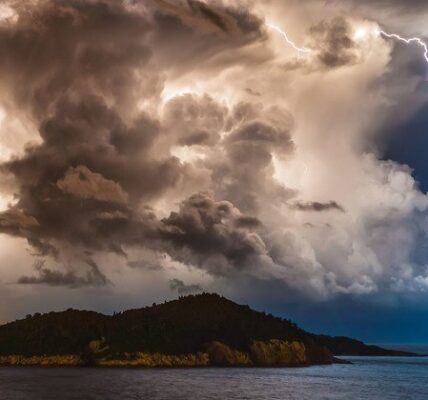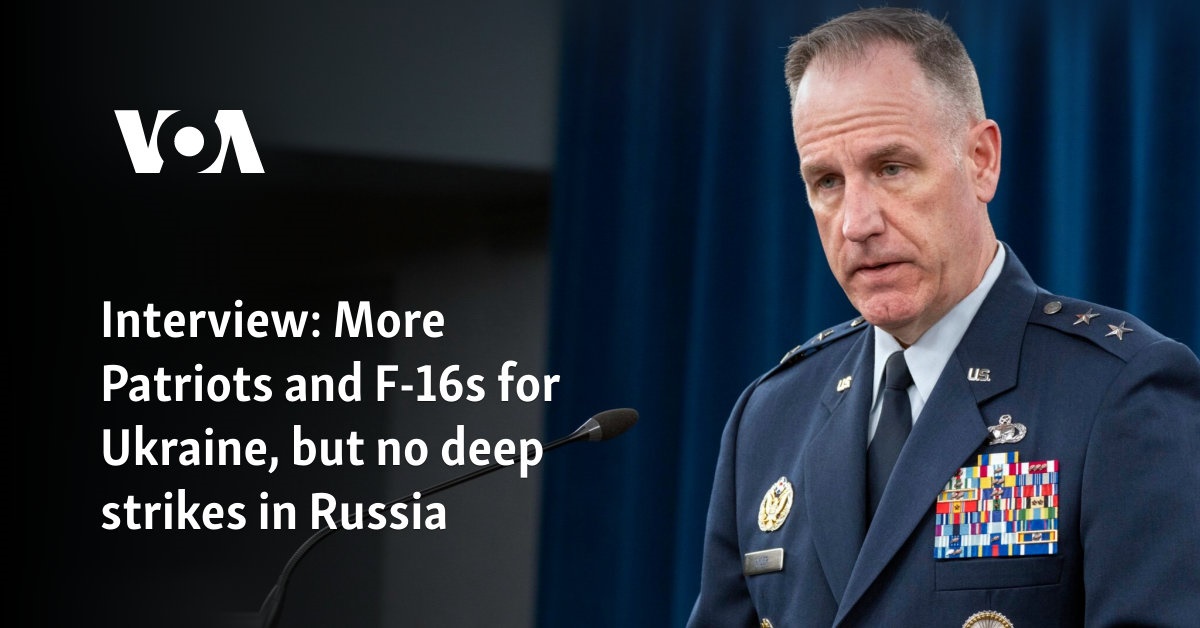
In May, the United States gave Ukraine permission to strike Russian targets just across the border using American-provided weapons. This decision enabled Ukrainians to better defend against Russian attacks in Kharkiv and other Ukrainian regions. However, the permission did not extend to the deployment of long-range weapons like ATACMS missiles, which the U.S. has also been providing to Ukraine.
Although Ukrainian authorities have been appealing for more flexibility to strike inside Russia, for now, the U.S. policy remains unchanged, Pentagon Press Secretary Major General Pat Ryder told Voice of America in an interview.
He also talked about efforts to find more Patriot air defense batteries for Ukraine, F-16 fighter jets, and establishing the command center in Germany that would help Ukraine in its effort to join NATO.
The following transcript has been edited for clarity and length.
VOA: President Biden announced that the U.S. and its allies will provide Ukraine with additional Patriot batteries and air defense systems. The U.S. will transfer one additional Patriot battery. How long will it take to deliver to Ukraine? Is there any timeline, and will it require additional training for Ukrainian soldiers?
Maj. Gen. Pat Ryder: As you know, air defense for Ukraine has been a priority area for Secretary Austin and the U.S. government for a while now. If you go back more than a year ago, this is something we’ve been talking about: how best to get Ukraine the air defense capabilities that it needs in order to protect its people and its sovereignty.
For operation security reasons, I’m not going to be able to go into the deployment timelines other than to say, as always, we’re going to work with our Ukrainian partners to get that capability there as quickly as possible. And certainly, we’ll leave it to Ukrainian officials to talk about when those systems arrive and when they’re operational.
Needless to say, we understand the urgency, as evidenced by Russia’s horrific missile strikes last week, one of which hit a children’s hospital in Kyiv. So this is something that will continue to be incredibly important for us.
VOA: Secretary (Lloyd) Austin said that F-16 fighter jets are being transferred to Ukraine as we speak. Once they arrive, they will undoubtedly become the prime target for the Russians. Will the United States help Ukraine maintain those aircraft and, more importantly, protect them from potential Russian attacks?
Maj. Gen. Pat Ryder: Well, look, the F-16 is an incredible capability. It’s a high-tech system that requires very specified training, not only on how to operate it but on how to maintain and sustain it.
The Ukraine defense contact group (UDCG) Air Force capability coalition has been working very hard with Denmark and the Netherlands in the lead with the U.S. as a tri-chair to look at not only making sure that Ukrainian pilots are getting the training but also that Ukrainian maintainers are being trained on the sustainment of those systems, and how best to operate them in the threat environment that Ukrainian pilots will face.
VOA: President Zelenskyy calls on the United States to lift all existing restrictions on longer-range weapons, especially ATACMS. Is this off the table, or is this something that you’re talking to the Ukrainians about, and this approach might be adjusted?
Maj. Gen. Pat Ryder: As you highlight, we continue on a very regular basis to talk with our Ukrainian partners in terms of what their needs are when it comes to protecting Ukrainian sovereign territory and taking occupied territory back. Every step of the way, we have worked with the Ukrainians to understand their needs and to try to evolve requirements in terms of the support needed to help protect sovereign Ukrainian territory.
In fact, just recently, as you know, we authorized the use of U.S. munitions across the border in support of counterfire, defensive strikes.
But our policy hasn’t changed in terms of long-range strikes. I think it’s important to understand here that we don’t want to see unintended consequences and escalation to make this a broader conflict that extends beyond Ukraine. And that’s something that I think we all need to think about and take very seriously.
Never at any point, though, do we underestimate the threat that Russia poses to Ukraine. So we’re going to continue to work with Ukraine, and we’re going to continue to ensure they have what they need to protect their sovereign territory and their people.
VOA: How exactly could the situation escalate? It did not escalate after the recent permission from the U.S. to strike across the border.
Maj. Gen. Pat Ryder: I think in that case, what we’re talking about is just common sense in terms of if you’re being shot at from across the border, or if they’re forming troops up to conduct attacks, for example, into Kharkiv, it makes sense to be able to enable Ukrainians to fire back.
But again, you have to look at the second and third-order effects in terms of potential escalation if targets inside Russia are struck that don’t necessarily have a strategic impact or could have unintended consequences in terms of escalation.
So throughout the duration of this conflict, we work very closely with Ukraine and our partners throughout Europe to prevent a wider war. The U.S. is not at war with Russia. We don’t seek conflict with Russia, but we fully support Ukraine’s right to defend itself, and we’ll continue to work with Ukraine to make sure that they can do that.
VOA: General, could you tell us more about the new command center in Wiesbaden, Germany? When will it begin operating? Who’s going to be in charge of it, and how exactly will it coordinate the joint effort to support Ukraine in the long term?
Maj. Gen. Pat Ryder: As you highlight, NATO announced that it will be initiating a three-star command in Wiesbaden that will help with the coordination of training and security assistance for Ukraine. This will be complementary to and supportive of the Ukraine defense contact group, so those two mechanisms will be able to work together to support Ukraine.
As Ukraine continues to develop and build its forces, this will, in many ways, be focused on interoperability so that in the future, when Ukraine is in a position and NATO Allies achieve consensus, it will be in a much better position to join NATO.
Source: voanews.com
